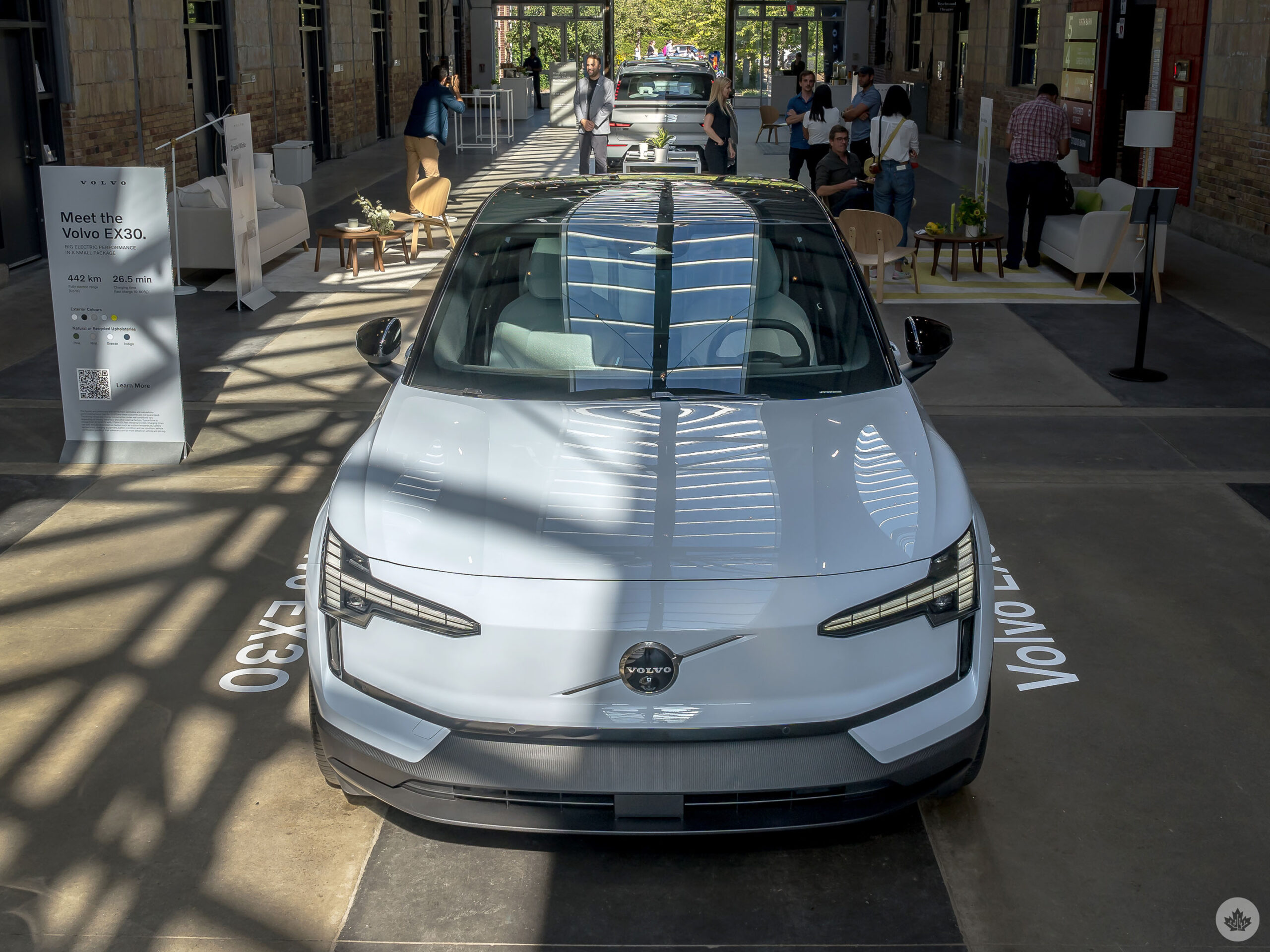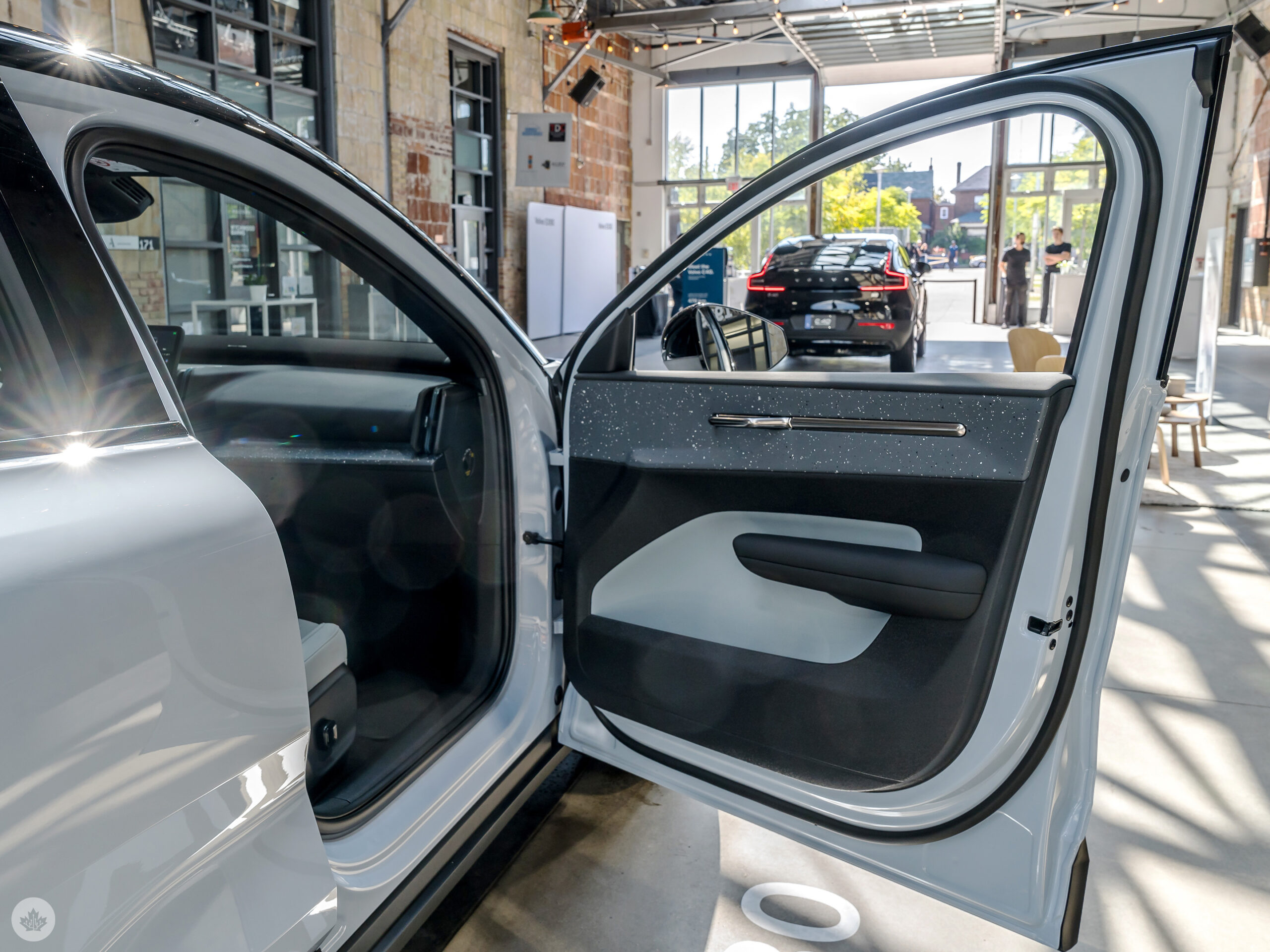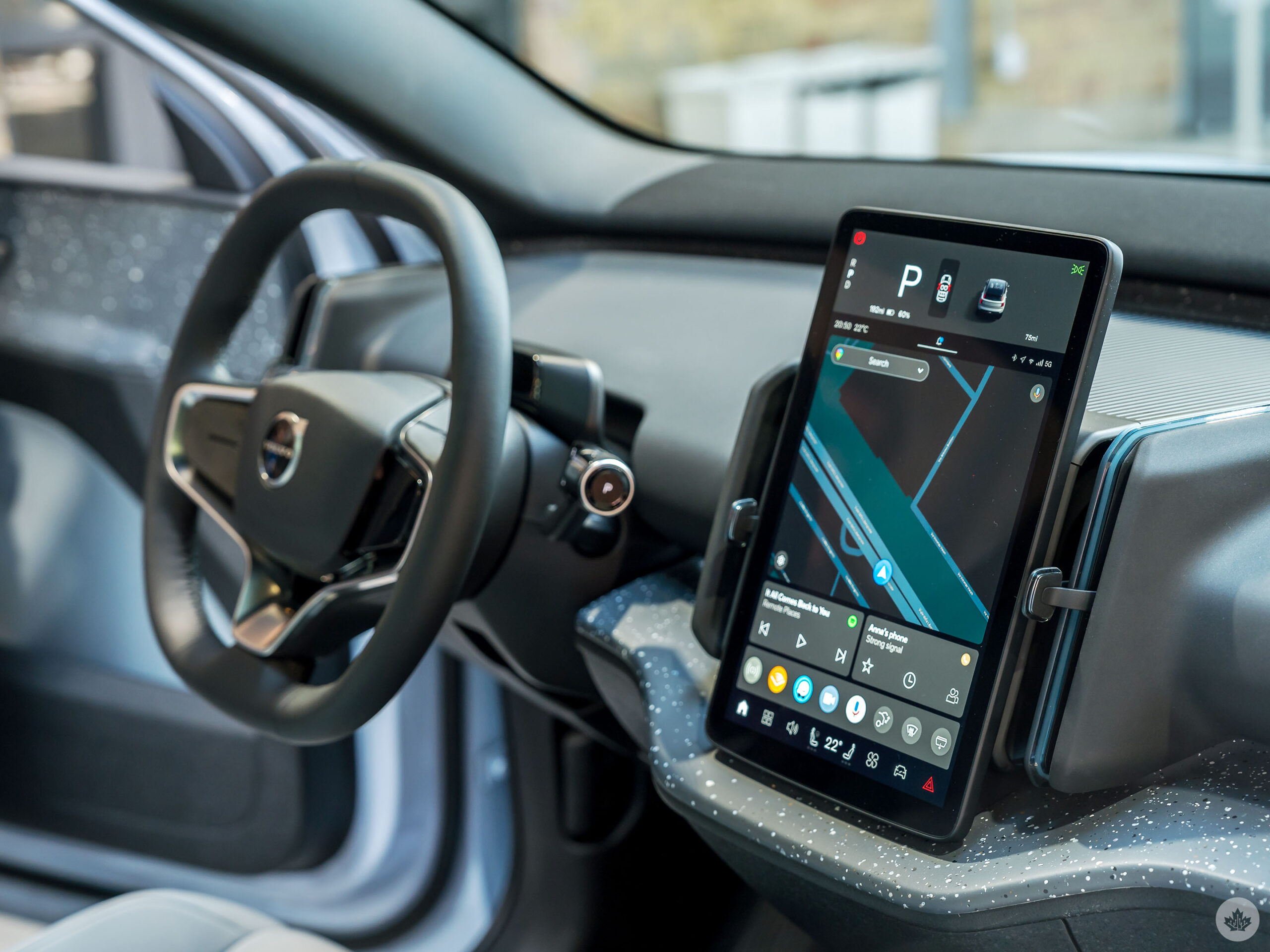
Volvo isn’t a flashy brand compared to some other automakers, but it’s hard to argue with the consistency in its approach, which is evident in the 2025 EX30.
This is yet another electric vehicle (EV) to add to the company’s current lineup, joining the likes of the XC40 Recharge and C40 Recharge. It’s also the smallest SUV the company has ever built, so it is definitely a crossover SUV in that regard, but on paper, at least, it also looks to have some power to go with it. You’ll have to wait till summer 2024 to get behind the wheel of one, but orders are happening much sooner.2025 Volvo EX30 hands-on: minimalism meets sustainability

I didn’t get to test drive it, unfortunately, but I was able to get a closer look at the EX30 and see what it has to offer and what you can expect.
Single or double?
Volvo revealed the 2025 EX30 will come in two trims. The single motor drives like a rear wheel drive system, considered the “extended range” model with its 442km range. It’s peppy because of its 268 horsepower and 253 lb-ft. of torque, capable of going from 0-100 km/h in 5.3 seconds. The twin motor is an all-wheel drive equivalent, which ramps up the horsepower to 422 and torque to 400 lb-ft., which is why it can hit 100 km/h in a mere 3.6 seconds. No other Volvo vehicle — including combustion engine models — has been able to accelerate that fast.

That does cut down the estimated range to 426km, but the discrepancy between the two trims is fairly small compared to the significant difference in performance under the hood. That said, they do use the same battery, which stands at 64kWh in real-world charging (69kWh on paper). Assuming you can get that kind of throughput, Volvo figures you could go from 10-80 percent in 26 minutes using a Level 3 DC fast charger. It’s hard to tell how variables like weather, heating, air conditioning, etc. will affect those numbers.
Part of the reason for the combination of range and power stems from the way the EX30 was built. Volvo says the chassis and exterior are made of 25 percent recycled aluminum, 17 percent recycled steel, and 17 percent recycled plastics. It has a fairly low centre of gravity and sports a slimmer frame for better aerodynamics.
Minimalism inside
Reducing a vehicle’s carbon footprint is one thing, but Volvo took the axe to the interior in the proverbial sense. It removed the digital instrument cluster that normally sits behind the steering wheel and relegated all of those features to the 12.3-inch infotainment screen instead. Without getting the chance to play around with the system, I can’t tell how this sort of integration will work, but Volvo reps insist it will feel natural in spite of the visual context that will now go missing from an otherwise direct line of sight.
Like other Volvo EVs, the EX30’s infotainment system runs off Android Automotive, delivering a built-in experience with Google’s apps and services. That includes watching videos while parked. iOS users have the option to use CarPlay wirelessly, so iPhones can integrate pretty seamlessly too.

It also slashed all audio speakers from the doors and arrayed them as a soundbar along the dashboard instead. There was no audio demo to gauge how the new setup actually sounds, but in any case, the doors are pretty barren, save for the bigger storage areas. Window controls and lock/unlock are now in the centre console, leaving nothing mechanical equipped in the door itself. The only exceptions are the onboard sensors, including a new one that looks out for cyclists when opening the door so they don’t wipe out or ruin the door.
The dash is also devoid of any buttons or knobs, concentrating in-car controls to the infotainment screen or centre console one way or another. You still get buttons on the steering wheel, so shortcuts and quick actions through those are still readily available. A new infrared camera above the wheel also scans for head and eye movement to likely play a role in driver awareness for semi-autonomous features like lane keep.

Cup holders pop out from the centre console, which overhangs a gaping central glove compartment that drivers can share with a front passenger. With all the bins and storage spaces, the inferred minimalism could go awry quickly for pack rats who always find space to put something in their cars.
All sorts of material
Volvo loves repurposing discarded materials, and that’s very evident here. The EX30 will come with a choice of four interiors — or “rooms,” as Volvo calls them. Each has its own mix of materials and colours. That’s how the Breeze interior uses 100 percent recycled polyester, while Mist uses a blend of wool and recycled polyester. Window frames and shutters that were ground down are reused here for part of the inner door. You also get upcycled denim for the Indigo interior or woven flax for Mist and Pine.

In lieu of actual leather, you get Nordico, a blend that mashes up recycled PET bottles with cork and bio-attributed materials from the forests of Sweden and Finland. Pine oil adds the final touch to give the finish that smooth and soft texture leather is known for. Meanwhile, the carpets are entirely manufactured from recycled water bottles.
Volvo had samples of all these blends, all of which felt great to the touch. Just too bad no one was allowed to sit in the vehicle, so it was hard to tell how comfortable the materials and seats were. While spacious enough for its size, I can see the EX30 posing some challenges for taller drivers who routinely have passengers in the back. Speaking of which, trunk space in the back is reasonably sized, which you can expand by lowering one or both rear seats.
Order now, pick up later
The 2025 Volvo EX30 will cost $53,700 to start, some of which you can get back through the federal government’s iZEV rebate program. That’s the starting price, with Volvo yet to divulge what other trims or packages will cost. There’s also a cross country variant for the EX30, but there’s no confirmation it will find its way to Canada.
The other two trims will come in five colours: vapour grey, onyx black, moss yellow, cloud blue and crystal white. When orders open up, getting one will require a $1,000 deposit up front, and you’ll have to wait until summer 2024 to get in and drive one.
MobileSyrup may earn a commission from purchases made via our links, which helps fund the journalism we provide free on our website. These links do not influence our editorial content. Support us here.



